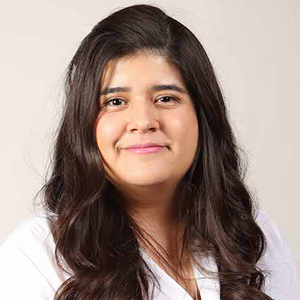Assistant Professor Michelle Del Rio, Ph.D. has been awarded a federal grant of $994,743 for her "Healthy Homes Technical Study Proposal" to investigate lead exposure in homes and to better characterize the exposure risk from lead that can be found in household dust.
“This project builds on my research for the last seven years,” shares Dr. Del Rio. “Where I grew up in El Paso, Texas, we are still dealing with legacy contamination from a lead smelter site that operated for almost a century…I am the first of my family to graduate from college, let alone get a Ph.D., and I wanted to do something to give back to my community.”
This grant is part of a nationwide initiative from the U.S. Department of Housing and Urban Development (HUD), and Dr. Del Rio’s project received the entire amount allotted to the state of Indiana. Research will begin in early 2025 in partnership with Gabriel Filippelli, Ph.D., chancellor’s professor and executive director of the Indiana University Environmental Resilience Institute; and Ganga Hettiarachchi, Ph.D., professor of soil and environmental chemistry at Kansas State University.
“I am very excited for this opportunity to continue my work and support this big cause of preventing lead exposure,” says Dr. Del Rio. “Lead can be found in household dust due to poorly maintained lead-based paint, and typically found in older homes built before 1978. However, dust can also be contaminated from hobbies or occupations that work with lead or contamination in nearby soils.”

Dr. Filippelli says primary sources of lead in soil and dust are from degraded lead-based paints, past emissions from leaded gasoline, and various industrial sources. He has developed a community science program to analyze soil and dust lead concentrations from across the US, archived samples from which will form a component of this current effort.
"We found that older urban neighborhoods in Indiana typically have higher soil lead, a pattern consistent across the country," shares Dr. Filippelli. "More critical for this HUD study, though, is our catalog of over 800 interior dust samples from homes across the U.S., which we will use to do more refined analysis of human exposures."
In addition to elevated levels of lead still being present in some urban surface soils, Dr. Del Rio says that smoking in the home can potentially increase lead exposure, particularly second-hand smoke inhaled by children. Another surprising source is imported dinnerware that contains lead.
"There is a high correlation between children with elevated lead levels in their system with a family member that smokes in the home," says Dr. Del Rio. "The goal is to gain more information on the main sources of lead exposure and how much of it is available for someone to observe it and be exposed to it."
The more information that can be gained, the better equipped Dr. Del Rio and her team can be in terms of informing tailored household interventions, such as smoking cessation programs and lead remediation efforts in paint and soil. Dr. Hettiarachchi, who has been collaborating with Dr. Del Rio for six years, uses her knowledge of soil and environmental chemistry to protect the health of humans and environment and compliments Dr. Del Rio’s research focus of human health protection.

“It’s important to note that lead-contaminated soils mostly look like any other soil, with no specific smell or color change, so this this a hidden danger that most people are not aware of,” shares Dr. Hettiarachchi. "The potential harm to children is significant, and we must act with urgency to address this issue."
Common strategies include covering/capping contaminated soils that are close to the outside walls of houses (where most lead paint is usually located) with clean soil or mulch, according to Dr. Filippelli. Other effective surface barriers can include thick grass cover, landscape fabric and a compost–clean soil mix layer over it, according to Dr. Hettiarachchi.
"To reduce inside exposure, we suggest that people leave outdoor shoes at the doorstep, perform weekly floor cleanings with a HEPA-grade vacuum cleaner, and wet wipe horizontal surfaces weekly," adds Dr. Filippelli. Other recommendations include frequent handwashing, avoid bringing outdoor toys inside, change out of outdoor work clothes before entering the home, and take special care with indoor/outdoor pets.
What is considered a “normal” level of lead in a home? Dr. Hettiarachchi says while there are established standards for indoor dust lead on various surfaces, there are no specific indoor air quality standards for lead.
“Lead occurs in almost all environmental media; background concentrations are usually low,” says Dr. Hettiarachchi. “The target is to move harmful forms of indoor lead closer to zero—although achieving zero is impossible. Taking measures to reduce the impact of soil and indoor dust leads is extremely important to improve human health, especially for children who are more vulnerable to lead.”
For more stories about SPH-B students, faculty and staff making an impact locally and worldwide, visit go.iu.edu/48bx.


